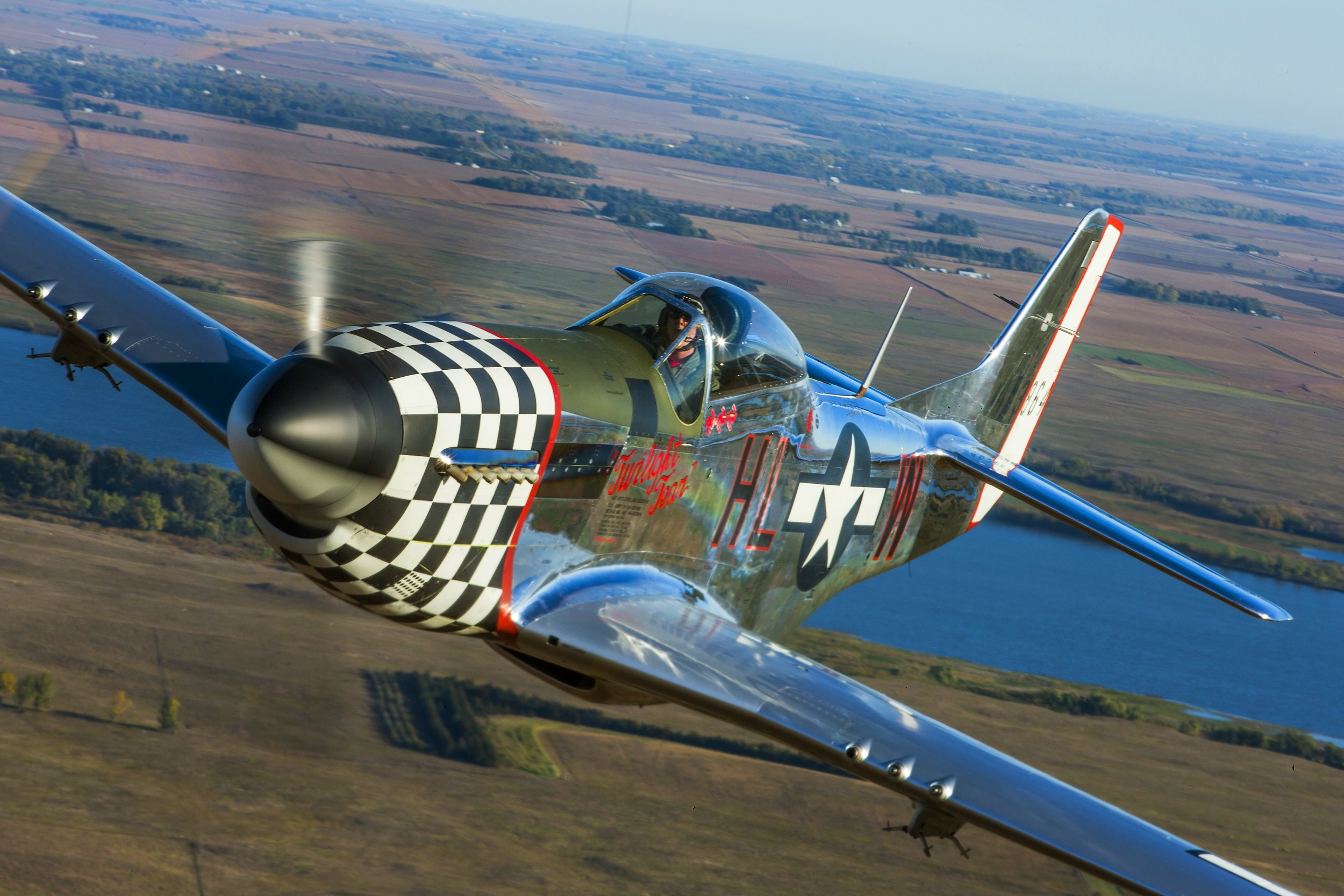
Twilight Tear
North American P-51D Mustang
History
Twilight Tear, the North American P-51D Mustang, has a remarkable history that spans several countries and roles. Delivered to the 78th Fighter Group in Duxford, England in April 1945, she entered service late in World War II under the command of Lt. Hubert "Bill" Davis. Lt. Davis bestowed upon her the name of his favorite racehorse, and she proved her mettle by downing three German aircraft, including two ME-109s and the iconic ME-262, Germany's first jet fighter. Notably, Lt. Davis also took part in the raid on Hitler's Eagle's Nest towards the war's end.
Post-war, Twilight Tear found herself in the ranks of the Swedish Air Force in 1948 before moving on to serve in the Israeli Air Force from 1953 to 1960. In 1960, the aircraft caught the eye of Bill Lear, of Lear Aircraft fame, who modified her for civilian use as the world's first autopilot demonstration platform. Unfortunately, a crash in Iceland in 1963 led to her storage until an American acquired her in 1991. Twilight Tear passed through various hands until landing with Ron Fagen in 2005. Discovering her illustrious past prompted a meticulous restoration to her original WWII specifications, a feat that culminated in the prestigious "Lindy" award at Oshkosh in 2009. The attention to detail extended to functional .50 caliber machine guns, highlighting the commitment to preserving her legacy.
More about the 78th Fighter Group
Activated in 1942, the 78th Fighter Group trained with P-38s for combat as part of the west coast air defense organization before moving to England in November 1942 under the Eighth Air Force. By April 1943, the group was stationed at Duxford Aerodrome, transitioning to P-47s. Consisting of the 82d Fighter Squadron (MX), 83d Fighter Squadron (HL), and the 84th Fighter Squadron (WZ), the 78th conducted missions escorting bombers and engaging in various counter-air activities. Notably, the group participated in pivotal campaigns, including Big Week in February 1944, aiding in the invasion of France, supporting the Normandy landings, and contributing to the breakthrough at Saint-Lô in July 1944.
In December 1944, the group shifted to P-51 Mustangs to partake in the Battle of the Bulge and supported the airborne assault across the Rhine in March. The unit's valor during these missions led to the award of a Distinguished Unit Citation for its role in the airborne attack on Holland in September 1944 and another for its actions against German airfields near Prague and Pilsen in April 1945. Duxford aerodrome, now beautifully restored to its WWII grandeur, continues to exist today. The airfield is jointly owned by the Imperial War Museum (IWM) and Cambridgeshire County Council, serving as the site of the Imperial War Museum Duxford and the American Air Museum.





